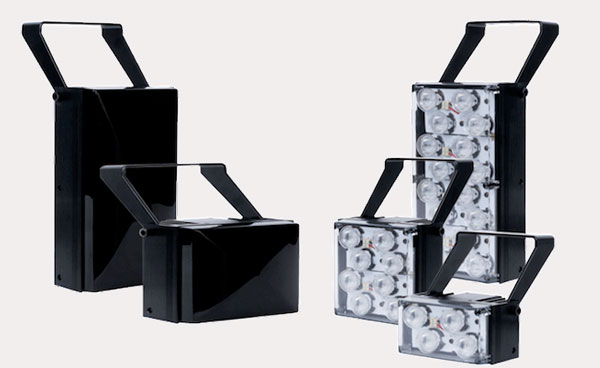
The sound of sirens in the distance is commonplace, nowadays. Whether related to a medical emergency or everyday crimes, such as theft, property crimes, and so on, we?re all accustomed to hearing these sirens by now. It is worth noting that many incidents that police respond to take place at night.
According to a recent report by the Sleep Judge, more than half of murders, manslaughter, sexual assaults, robberies, aggravated assaults and motor vehicle thefts happen long after the sun has set.
To anyone looking to address the round-the-clock security challenge, deploying the most comprehensive surveillance solution is a must, and this means, looking at the instrumental role illumination plays in video capture.
Limitations of traditional video surveillance
For surveillance cameras relying on video analytics and artificial intelligence (AI) to deliver functionalities such as facial recognition, license plate reading and motion detection, night-time crimes can pose something of a problem. Without adequate illumination, images from video cameras are grainy and unusable.
If surveillance cameras can?t be used to prevent, detect and resolve crimes that occur in these areas, the entire security operation is obsolete. Best-in-class security solutions must be able to see everything, day and night.
A purpose-designed illumination solution
Addressing this issue is easier than you might think. Much like a human eye needs some sort of light to ?see,? so does video surveillance technology. Integrating external illuminators into a security solution can optimise camera performance exponentially, expanding a camera?s video capture and coverage abilities and ensuring the operation of video analytics, day and night.
Opting for an external illuminator allows system integrators to select a device that matches the exact emission range of a camera?s field of view (FOV). The result is an evenly lit visual field, where captured images are clear and effective for security purposes.
The two most common options available to integrators include infrared (IR) and white light illuminators. Each technology is built to optimise particular deployments, depending on their needs.
Infrared versus white light
IR illuminators emit IR light, which is invisible to the human eye and perfect for covert surveillance operations. When cameras need to be able to detect potential threats over long distances, IR illuminators are perfect for the job as they typically have longer emission ranges. IR illuminators are optimal for surveillance operations in license plate recognition, border patrol, safe cities, theme park, and medical sleep lab applications.
If an end user needs to implement full-color video analytics for identification purposes, such as facial, object and license plate recognition, white light illuminators are undoubtedly an integrator?s best bet.
IR illumination and traditional thermal security cameras, after all, are only able to provide black-and-white images, whereas object recognition software often identifies objects based on their color. White light illuminators installed alongside AI-powered surveillance cameras enable enhanced video image clarity, which, optimises video analytics performance.
When customers want to physically deter suspicious activity, deploying white light illuminators is effective. A recent study out of Crime Labs New York found that businesses that deployed visible lights to deter crime ?experienced crime rates that were significantly lower,? which ?led to a 36 percent reduction in ?index crimes??.
Moreover, LED based white lights operate at low running costs and typically have long lifespans, saving end users thousands of dollars a year in energy costs without having to sacrifice surveillance optimisation.
External versus built-in illumination
Security customers looking to use lighting to deter crime and improve the performance of video surveillance may consider ?all-in-one” solutions, as some cameras have LEDs (light emitting diodes) built into them.
These LEDs typically encircle the lens and therefore shed light in whatever direction the camera is pointed. However convenient these may seem, built-in illumination can cause problems.
First, LEDs built into cameras and next to other electronic components often cause heat to build up, which attracts insects that can trigger motion detection and obstruct a camera?s view. This heat build-up also shortens the LED lights lifespan.
Built-in LEDs also tend to create ?hot spots? with glare and reflection back into the camera, often because these lights only cover a 30-degree field of view (FOV), even though the average camera?s FOV is 90 degrees. This issue can severely limit a camera?s visibility, essentially rendering those remaining 60 degrees dark and unusable.
All in all, when integrating lighting solutions into your security deployment, a cost-effective solution that enhances a camera?s video capture and coverage abilities, are external illuminators because they offer flexible choices of field of view and distances.
Best-in-class security solution
When it comes to criminal conviction in a court of law, ?seeing really is believing.? Cameras deployed without proper illumination are rendered blind, especially at night, just as any security officer would be when patrolling the same unlit area. To guarantee end users the most reliable and highest performing security solution, consider integrating best-in-class illumination into your offerings.


